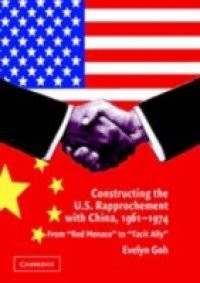With Nixon's historic reconciliation with China in 1972, Sino-American relations were restored, and China moved from being regarded as America's most implacable enemy to a friend and tacit ally. Existing accounts of the rapprochement focus on the shifting balance of power between the USA, China and the Soviet Union, but in this book Goh argues that they cannot adequately explain the timing and policy choices related to Washington's decisions for reconciliation with Beijing. Instead, she applies a more historically sensitive approach that privileges contending official American constructions of China's identity and character. This book demonstrates that ideas of reconciliation with China were already being propagated and debated within official circles in the USA during the 1960s. It traces the related policy discourse and imagery, and examines their continuities and evolution into the early 1970s that facilitated Nixon's new policy.


















